LED lighting is scheduled to hit store shelves in a big way this fall, offering consumers a broad range of choices
BY RICHARD COMERFORD
Editor
Electronic Products
As we enter a new era in lighting with the advent of solid-state illumination, the transition — while it will ultimately be rewarding is unlikely to be easy or simple. At issue are what changes to lighting infrastructure will be required to make the change, an at the center of the debate is the electrical socket.
The historical perspective
In Thomas Alva Edison’s Jan. 27, 1880, patent for the carbon filament bulb, the means of supplying current to the filament is two wires that have to be somehow connected to a dc power source. Practical man that he was, Edison quickly set to work finding a simpler and easier means for connecting the bulb to a power source and for wiring homes for electricity.
In March 1881, he applied for a patent on a “Fixture and Attachment for Electric Lamps.” He states in the patent application that “it is desirable that fittings for carrying and supporting the lamps should be devised as nearly resembling those which experience has shown to be most desirable in gas-lighting as the differences in lighting agents will admit.”
The drawings that accompany the patent (see Fig. 1 ) show elements that are familiar and unusual to us today. The socket we recognize as the Edison screw-in socket widely used in home lighting today. The armature and piping, however, is only found in century-old buildings that were converted from gas to electric lighting.
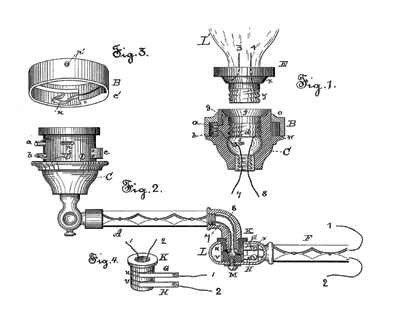
Fig. 1. Edison’s design for a new lighting system introduced a screw-in socket for what has come to be known as the Edison base, along with wiring techniques that make use of traditional gaslight piping.
While everyone today takes the Edison socket for granted, it was in its day a major change. Gas systems used cloth mantels that were placed over a 16-candlepower gas jet; the mantle, which turned to ash when the gas jet was first lit, had to be changed when it fell apart, which could happen with a slight vibration. With the Edison lamp, users had to get used to a whole new way of maintaining their lighting system. But without that change, the new lighting system could never have worked.
Reapplying old lessons
In the coming months, consumers will begin to see a flotilla of new lighting devices come to store shelves. Among them will be incandescent-bulb-replacement products from such companies as General Electric, Philips, Sharp, and Toshiba, that will build upon the Edison socket to provide a new lighting system, in much the same manner as Edison used the gas lighting infrastructure.
The common element in these new offerings is their use of the Edison socket as the starting point (see Fig. 2 ). However, all the elements above the socket differ substantially from the traditional 60-W bulb.
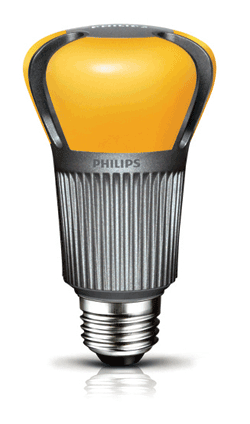
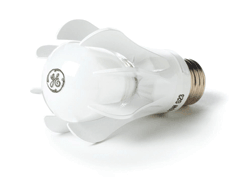
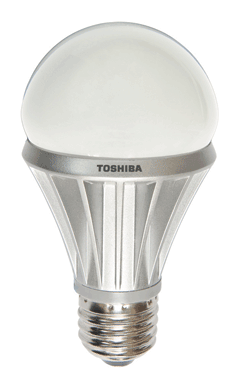
Fig. 2. New light bulbs from Philips (top), GE (middle), and Toshiba (bottom) begin from the Edison socket, but then vary to deal with the new LED light source.
Another element the new light bulbs have in common is that the neck of the bulb above the socket is not a translucent material, but a conical or cylindrical metal element. This element acts as a heat sink to remove the heat from the LED, which does not radiate heat like an incandescent. Heat must be conducted away from the internal circuit board that holds the LED. Further, the bases of these new lamps contain circuits to rectify ac to the dc the light-emitting diodes require. (In another interesting coincidence, the new light bulbs run on dc just as Edison’s original bulbs did.)
Philips’ newest offering dramatically changes the shape of the bulb so as to provide a broader angle of lighting. Whereas LEDs typically have a narrower angle of illumination than a traditional incandescent, Philips has arranged the internal LEDs to provide a broader angle of illumination. It has also wrapped the arms of the heat sink around the sides to the top of the bulb to provide a broader area for heat transfer.
The GE bulb’s shape is similar to a traditional incandescent bulb, but is surrounded by heat sink fins. GE says the fins are constructed so as not to interfere with the even distribution of light, but to provide high transfer of heat to the ambient environment and thus ensure the bulb’s longevity.
The bulb from Toshiba has the most traditional shape of the new light sources, relying strictly on the heat sink on the neck of the bulb to efficiently remove heat. The company also says it has developed an LED source for the bulb that will emit light at a 240º angle to more effectively replicate an incandescent light source.
Replacement advantages
The new LED bulb will come into the market at prices around $30, which for many consumers may result in sticker shock. Thus the industry is going to have to point out how real environmental and cost savings will result from their use.
The more expensive LED bulbs do not have the potential negative environmental impact that compact-fluorescent (CFL) bulbs have. Because they contain mercury, CFL bulbs should not be discarded with regular household trash. Nor is there currently in place regulations for sorting out such bulbs in most municipalities.
Dealing with the cost of recycling CFLs may significantly change the economic picture, when added to the fact that they are not as energy efficient or as long-lasting as LEDs. Further, the slow startup performance of the CFL has not endeared it to the general public.
While the initial cost of LED bulbs may seem high compared with incandescent bulbs, in the longer term, LED lighting is less expensive. Consider that the life of an ordinary incandescent is about 1,000 to 1,500 hours, whereas LED bulb lifetimes are anywhere from 25 to 50 times longer. Further, the lifetime of an LED is a different lifetime; it is defined as the time until the LED loses some percentage of its brilliance. So even though it has technically failed, the LED bulb is still producing light. In effect, a 60-W-equivalent LED bulb at the end of its life becomes a 40-W-equivalent bulb.
Even if an LED bulb costs more than 25 to 50 times as much as an incandescent, it still costs less to operate, because LED bulbs use less energy they consume about 5% to 10% of the energy of an incandescent. In Japan, where energy is expensive, this led to rapid acceptance of LEDs. Because demand led to increased production, in the course of a year the price of the LED bulb dropped from approximately $70 to $30. While it is unlikely that LED bulb prices will ever be as low as incandescents, prices are likely to decrease somewhat with high-volume production and competition.
Adapting to a new paradigm
Edison’s incandescent had one thing in common with the gaslight it was replacing. Both were inherently wide angle light sources. The LED is not. While manufacturers are finding ways around this, the LED still inherently remains a narrow-angle source.
While this may sound like a drawback, it should be remembered that, in most cases, lighting fixtures have been designed to overcome the broad-angle properties of traditional incandescents. Torchieres and task light both work to reflect the incandescent’s light into a more narrow cone.
Thus some manufacturers are creating light modules and accompanying sockets that take advantage of LEDs unique properties. Both Cree and Molex (see Fig. 3 ), to name but two major suppliers, have created modular LED lighting systems that make it easier for lighting designers to apply LED technology in new ways.
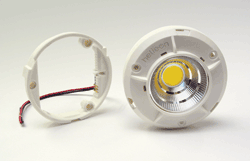
Fig. 3. New LED lighting systems like that from Molex take full advantage of LED characteristics to created new socket designs.
So with LED bulbs making their appearance this fall, solid-state lighting is on a path similar to the one Edison used in replacing gas lighting. But with exception of century-old homes like the brownstones of downtown Brooklyn, NY, where electrical wires still run inside old gas lines to light electrical chandeliers future lighting system sockets are likely to bear little resemblance to the incandescent system they are replacing. ■
Advertisement
Learn more about Electronic Products Magazine





